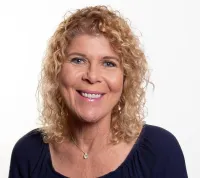Blog & Press Page
Achieving ESG & Zero Emissions
Cleaning up Cold Chain...


Food and Drug Distributors Going Green in the Black
Sure, we all know the profound challenges heat waves can pose to food distributors responsible for transporting things like ice cream to our supermarkets, restaurants, and hotels every day. But what about this? What about environmental conditions such as snowstorms and high elevations? How do those factors challenge the integrity and deliciousness of your ice cream? How do food and drug distributors go green without jeopardizing their ability to deliver perfection, and stay fiscally responsible in the process? Where do they even begin to keep us fed and alive, make big changes to reduce their footprint, and keep their businesses afloat?
Each refrigerated trailer (reefer) delivering food, has traditionally been powered by a diesel-powered refrigeration system that generates 27 ton of toxic black carbon per reefer per year. These diesel transport refrigeration units (TRUs) that power the reefer, have had the daunting task of refrigerating your food and drugs to precise temperatures, for decades. These days, the components of these refrigeration systems have also been required to report performance data to ensure consumer safety. When you mix heat waves, with snowstorms, tornadoes, elevation, “doors open” loading and unloading, and the g-force of the semi-trucks bouncing around all day, it would shock you to learn how much can go wrong.
Now, the drug distribution and food distribution (or cold chain) industries are under pressure to discard their diesel-powered refrigeration systems with clean, zero emission refrigeration systems (ZE TRUs). It’s taken decades to “perfect” the performance of the diesel-powered TRU systems, and no one has been able to create a zero emission TRU that meets or beats the traditional systems until the Koelsch brothers of AEM.green cracked the code.

This is not about climate change. This is a mission about clean air, specific to carbon-reduction. Both Robert and Ron experienced health issues themselves, related to the toxic black carbon that is generated from diesel-powered TRUs. They’ve heard story after story, and read study after study highlighting how diesel fumes Can you imagine the impact clean air mandates, zero emission goals, and ESG has on the refrigerated food and drug delivery industries’ operational disruptions and balance sheets? Yes, each diesel TRU generates ~27 ton of black carbon per year. That means, the AEM.green zero emission SolarTechTRU reduces black carbon toxins by 27 ton per year. That’s quite powerful when you do the math behind the fact that California alone has 100,000 TRUs on-the-road, daily.
Calculating the exact number of people that 27 tons of black carbon from diesel emissions can potentially kill in a year is complex and depends on various factors, including the concentration of black carbon in the air, population exposure, existing health conditions, and the overall air quality in the affected area. However, we can provide a general estimation based on established research linking black carbon emissions to public health impacts.
Understanding Black Carbon and Health Impacts:
Black Carbon is a component of particulate matter (PM2.5) produced by incomplete combustion of fossil fuels, including diesel. PM2.5 is known to penetrate deep into the lungs and bloodstream, leading to various health issues such as respiratory and cardiovascular diseases, and can increase mortality rates.
Health Impact Estimates: The World Health Organization (WHO) and other studies estimate that long-term exposure to PM2.5, which includes black carbon, is responsible for millions of premature deaths worldwide each year.
Estimating the Impact of 27 Tons of Black Carbon:
General Impact of Black Carbon: A study by the International Council on Clean Transportation (ICCT) suggested that diesel-related PM2.5 emissions were responsible for approximately 181,000 premature deaths globally in 2015.
Scaling to 27 Tons: If we roughly estimate the impact of 27 tons of black carbon emissions, we can use the general relationship between black carbon emissions and premature deaths.
While there isn't a straightforward conversion factor to directly relate tons of black carbon to deaths, some studies provide approximations:
U.S. EPA: The U.S. Environmental Protection Agency has tools that estimate the health impact of PM2.5. For example, reducing 1 ton of PM2.5 can prevent a few premature deaths, depending on the population density and exposure.
As temperatures rise and fall, as mother nature strikes, and as humans need to manage insulation partitions and EV plugins, maintaining precise multi-temperature refrigeration, both cold and warm, becomes increasingly challenging for reefers (refrigerated trucks) and TRUs (transport refrigeration units), which are essential for preserving the integrity of perishable goods during transit. This all poses a serious risk to food safety, as even a slight deviation from the required temperature range can lead to spoilage or contamination.

Moreover, high-altitude routes present unique challenges for TRUs. The thin air and steep gradients demand more power from the refrigeration units, making it harder to maintain consistent temperatures. Heat waves exacerbate this issue, as the cooling systems must work even harder to counteract the external temperatures, potentially leading to increased fuel consumption and wear on the equipment. The zero emission TRUs also need to function without causing the drivers’ rang anxiety, or pull power from the tractor portion of the semi-truck.
Snow and cold weather, while seemingly less of a threat to refrigeration, can also pose significant challenges. In extreme cold, TRUs must be able to switch seamlessly between cooling and heating modes to prevent freezing of products that require above-freezing temperatures. For instance, fresh produce or certain pharmaceuticals may need to be kept within a narrow temperature range that is above freezing but still cold. If the TRU’s heating function fails in such conditions, it could lead to the freezing and subsequent spoilage of the cargo.
The ability to achieve precise multi-temp refrigeration is crucial when transporting mixed loads, where different compartments within a single truck must maintain different temperatures. For example, a truck might need to keep frozen goods at -20°C while simultaneously maintaining fresh produce at 4°C. Heat waves, snow, and high-altitude conditions all make it more difficult to achieve this level of precision, requiring advanced technology and meticulous planning. The refrigerated food delivery industry must continually adapt to these challenges, investing in more robust and flexible TRUs that can withstand the increasingly variable climate conditions. As heat waves become more frequent and intense, the pressure on the industry to maintain the highest standards of refrigeration will only grow, ensuring that food safety and quality are not compromised, regardless of the journey’s challenges.
With all this said, how does a food distributor make the best decision, and make these goliath conversions from diesel-powered TRUs to solar and electric-powered zero emission TRUs without disruptions to their meticulous logistics, and without going broke? The Koelsch brothers, co-founders of AEM.green and the inventors of the SolarTechTRU have proven its commercial viability for the food and drug distributors and have also cracked the code of enabling their customers to go green in the black. They’ve also cracked the code of avoiding the use of high voltage AC power in their EV systems that commonly electrocute and even kill people during plugins, with their automatic cordless charging systems and microgrids as well. Going green doesn’t mean you have to go broke, and in the AEM journey of “going green”, customers enjoy eye-opening experiences as massive line-item expenses start disappearing from their balance sheets.

Erika Feinberg, ESG & Communications Officer
Zero Emission TRU Conversions
Safe Industrial Solar Microgrids
AI Automatic/Cordless Charging
Hydrogen Fuel Cells/Rang Extenders
We appreciate you as much as you appreciate us
Send your stories too!
Let's keep our air clean & efficiencies flowing!
Copyright Advanced Energy Machines ©2025 All rights reserved






